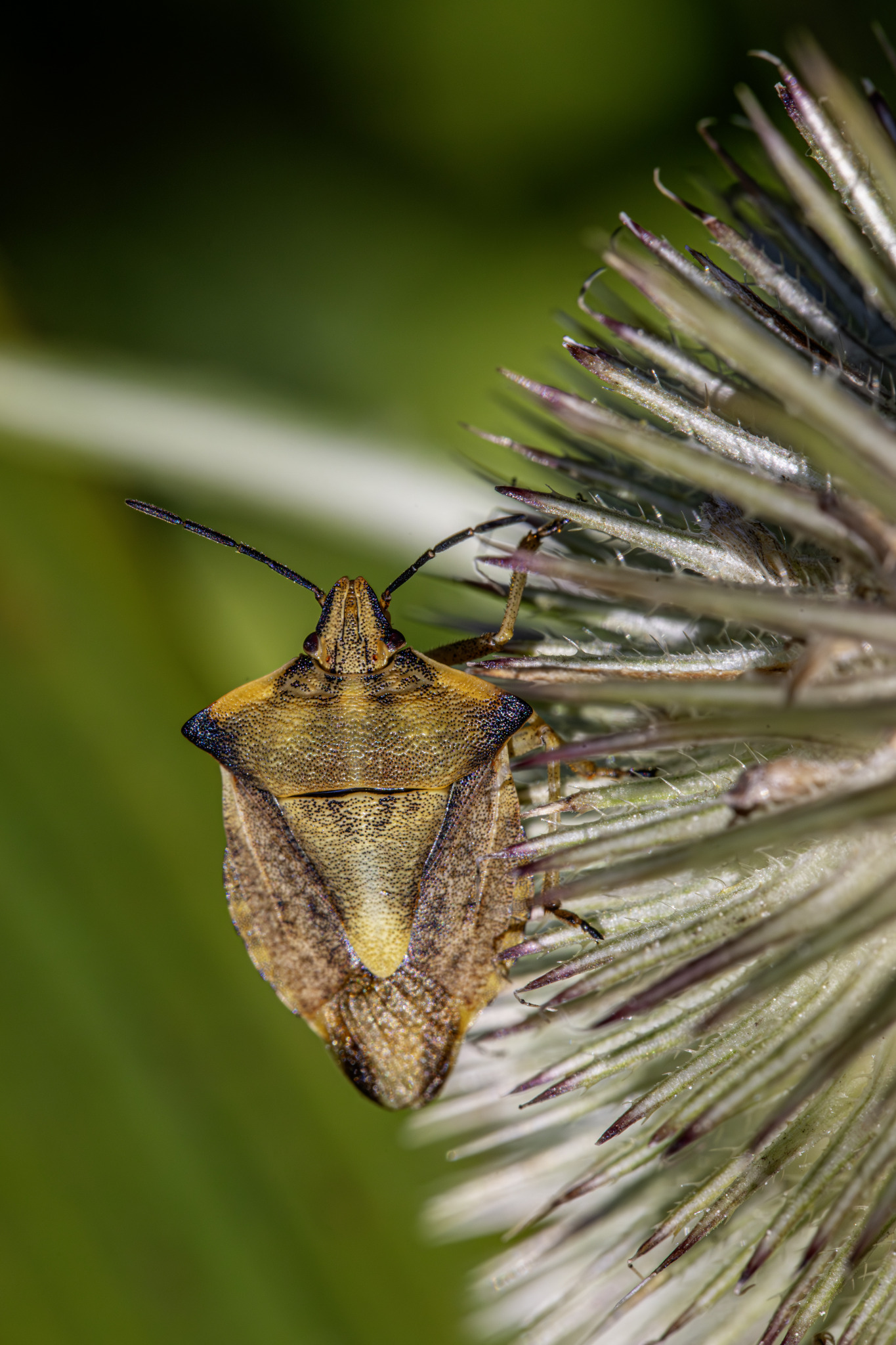The Northern Fruit Bug (Carpocoris fuscispinus) is a species of shield bug belonging to the family Pentatomidae. It is found across Europe and parts of Asia, particularly in areas with abundant vegetation. This bug is often recognized by its distinctive shield-shaped body and the coloration that varies across individuals.
Description
- Size:
- Adults typically measure between 11 to 14 millimeters in length.
- Appearance:
- Coloration: The Northern Fruit Bug has a variable color that ranges from orange-brown to yellowish-brown, with darker markings. The exact hue can vary depending on the individual and its environment.
- Body Shape: Like other shield bugs, Carpocoris fuscispinus has a broad, shield-shaped body. The edges of the abdomen (connexivum) are often visible along the sides of the body, with alternating light and dark bands.
- Spine: A key identifying feature is the pointed spine on the scutellum (the triangular plate on the back), which gives the species its name, “fuscispinus,” meaning “dark spine.”
- Antennae: The antennae are usually five-segmented and have a dark coloration towards the tips.
Behavior and Ecology
- Habitat:
- The Northern Fruit Bug inhabits a variety of environments, including meadows, gardens, hedgerows, and forests. It prefers areas with a good supply of plants, particularly those that bear fruit or seeds.
- Diet:
- Herbivorous: The Northern Fruit Bug primarily feeds on the sap of plants, using its piercing-sucking mouthparts to extract nutrients. It targets a wide range of plants, including fruits like apples, pears, and berries, as well as various herbaceous plants.
- Feeding Impact: While they can be considered pests in orchards and gardens due to their feeding on fruits, they generally do not cause significant damage unless in large numbers.
- Life Cycle:
- The life cycle includes several stages: egg, nymph, and adult. After mating, females lay eggs on the leaves or stems of host plants. The nymphs that hatch resemble miniature adults but lack fully developed wings and go through several molts before reaching maturity.
Ecological Role
- Interaction with Plants:
- Carpocoris fuscispinus plays a role in the ecosystem as both a consumer of plant sap and as prey for various predators, including birds, spiders, and other insects.
- Agricultural Impact:
- In agricultural settings, especially in orchards, the Northern Fruit Bug can be a pest, as its feeding can cause blemishes on fruits and lead to reduced crop quality. However, their presence is usually not severe enough to warrant significant control measures.
Conservation Status
- Distribution:
- The Northern Fruit Bug is widespread across Europe and parts of Asia. It is commonly found in suitable habitats and is not considered endangered or at risk.
- Conservation:
- There is no specific conservation concern for this species, as it is abundant and has a broad range. However, maintaining diverse plant habitats supports their populations and those of other insects.
Summary
The Northern Fruit Bug (Carpocoris fuscispinus) is a common species of shield bug with a distinctive appearance and variable coloration. Found across Europe and parts of Asia, it feeds primarily on plant sap, including that of fruits, which can sometimes make it a minor agricultural pest. Despite this, it plays a role in the ecosystem as both a herbivore and a source of food for predators. The species is widespread and not considered at risk, thriving in a variety of plant-rich habitats.
Views: 1246
Subscribe to the newsletter:
